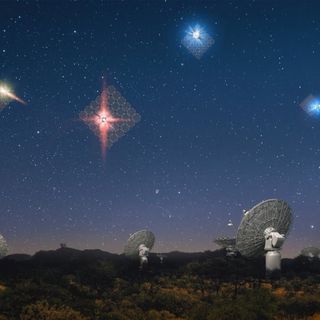A satellite from the U.S. National Aeronautics and Space Administration (NASA) has discovered a planet slightly larger than Earth and lying within the habitable zone that extends from its nearest star. Known as exoplanet TOI-700d, its year lasts 37 days and its surface temperature is roughly minus 3 degrees Celsius (26 degrees Fahrenheit).
The Transiting Exoplanet Survey Satellite (TESS), with support from an Earth-based NASA telescope and other facilities and amateur astronomers, discovered the planet located in the Dorado constellation, roughly 102 light-years away. The satellite launched in 2018 with the mission of identifying Earth-like and potentially habitable planets outside the Milky Way galaxy. TOI-700d is the satellite’s first discovery.
TOI-700d’s nearest star is a red dwarf — similar to our Sun, a yellow dwarf, but slightly smaller. This red dwarf is roughly 40% of our Sun’s mass, half our Sun’s surface temperature, and provides TOI-700d with 86% of the energy our Sun provides Earth, reports Sci-News.
But the exoplanet is not a carbon copy of Earth. The planet is tidally locked to its red dwarf star, meaning it rotates only once during its 38-day year, which causes one day to last as long as one year; during that time, half the planet is in darkness, half in light.
“Because TOI-700d is tidally locked to its star, the planet’s cloud formations and wind patterns may be strikingly different from Earth’s,” the astronomers at NASA’s Goddard Space Flight Center, one of the satellite’s supportive facilities, told Sci-News.
Related on The Swaddle:
We Just Got a Radio Signal From Another Galaxy, Scientists Say
Astronomers have been modeling what this could mean for the planet’s climate, with options ranging from an ocean-covered planet with a dense, carbon dioxide-rich atmosphere — “similar to what scientists suspect surrounded Mars when it was young” — to a cloudless, hard land planet “where winds flow away from the night side of the planet and converge on the point directly facing the star,” the astronomers explained.
It’s more speculation and imagination at this point, and will be, until there’s an opportunity for a closer look, as from a telescopic space probe.
“It’s exciting because no matter what we find out about the planet, it’s going to look completely different from what we have here on Earth,” Gabrielle Engelmann-Suissa, PhD, a visiting research assistant at NASA’s Goddard Space Flight Center involved in the modeling, told Sci-News.
Which is the exact problem in determining how likely it is that a planet is actually livable. All ‘Earth-like’ planets discovered so far are Earth-like in a few key ways — but very un-Earth-like in others. In September 2019, The Swaddle reported the discovery of water vapor in the atmosphere of another ‘Earth-like’ planet, K2-18b — but that planet, while also in the habitable zone of its nearest star, is roughly eight times as dense as Earth, meaning “an average human on K2-18b would weigh 1 ton” The Swaddle reported at the time.
In fact, even the experts can’t agree what habitability is. Water is essential — but so is carbon, a nearby sun, and nutrients, Stephanie Olson, a planetary researcher at the University of Chicago, told MIT Technology Review in 2019. And while these are the things necessary for human life on Earth, they might not be as necessary for other forms of life; for instance, astrobiologists, scientists who study the possibility of life outside of Earth, are interested in the oceanic environments of Jupiter’s moon Europa, and Saturn’s moons Titan and Enceladus, even though these worlds lack a nearby sun and wouldn’t be livable by human standards, reported Neel Patel for MIT Technology Review at the time.
So while news of TOI-700d is certainly fascinating and exciting, it’s worth remembering what it offers Earthlings most: scope for more inquiry and research.




